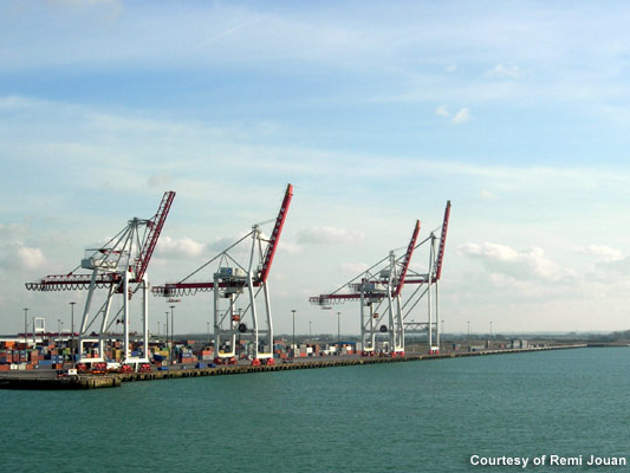
The Dunkirk LNG terminal in France is owned and operated by Dunkerque LNG, an EDF subsidiary.
The parties involved in the project are Dunkerque LNG, Dunkerque Port and GRTgaz. The terminal was built by Dunkerque LNG. Preliminary work, including digging the outer harbour and developing a platform for it, was carried out by Dunkerque Port. Gas transmission network operator GRTgaz connects the terminal to the French gas network.
The final investment decision for the project was made in 2011. The project later received regulatory approvals and called tenders for construction. The terminal began commercial operations in January 2017.
The terminal has facilities such as a berthing station with the hosting capacity of around 80 LNG tankers a year, unloading system and storage facilities. It also includes a regasification unit and a seawater inlet to reheat the LNG, as well as a connection to distribution network.
The terminal has a regasification capacity between ten and 13 billion cubic metres a year. This capacity accounts for more than 20% of French natural gas demand.
The project incurs overall capital expenditure of approximately €770m and provides employment to 1,200 people. The life of the terminal is expected to be 50 years.
EDF is looking for partners to reserve regasification capacity in the terminal. Fluxys and Total respectively acquired a 25% and 10% interest in Dunkerque LNG.
Dunkirk LNG terminal construction and infrastructure
The construction of the terminal is consequent to EDF’s objective to strengthen and secure gas capacity. EDF wants to supply gas to its plants, and market electricity and natural gas. It was built in Grand Harbour Marine Dunkerque on the Common Loon-Plage.
The LNG is transported to storage tanks by methane tankers equipped with reinforced hulls and double-walled tanks.
The berth installed at the terminal is used for the mooring of methane tankers equipped with an LNG unloading system. A regasification unit opens rack vaporisers. Pipelines to transfer the LNG and two or three LNG storage tanks with 190,000m³ capacities were also installed.
A supply tunnel was developed to facilitate tepid water from the nuclear plant for the regasification of LNG.
The terminal is designed to re-introduce boil off gas without burning the gas into flare.
Two options have been planned for the project and are utilised based on the demand for capacity. Option one for annual output of 10bcm involves two tanks with a storage capacity of 380,000m³, one jetty and network delivering capacity of 1.4m³/h.
Option two would result in an annual output of 13bcm. It includes three 570,000m³ storage tanks and one jetty. The network delivering capacity is 1.9m³/h.
The terminal is expected to consume 40MW of power. Its connection to the power grid runs from Grande Synthe substation. It is connected via a 90kV buried electricity line. The connection flows in parts via the Dunkirk Port area.
LNG terminal site
Dunkirk was selected as the appropriate site for developing the LNG terminal by EDF in 2005. Further proposals to build the terminal were called and EDF was chosen by Dunkirk Port in 2006 for carrying out a three-year feasibility study.
Dunkirk Port has partnered with Fugro (for geotechnical surveys), Arcadis (engineering), Sector Group (for marine engineering) and Sogreah Consultants for carrying out the feasibility study.
Contractors involved in the project
Bouygues and Entrepose Contracting were selected to design and construct three cryogenic tanks for the Dunkirk LNG terminal.
Reganosa provided assistance for the start of operations at the Dunkirk LNG terminal.



